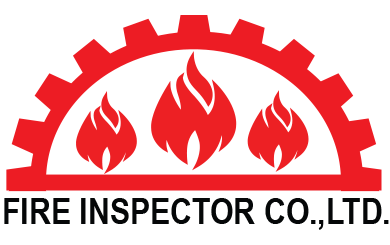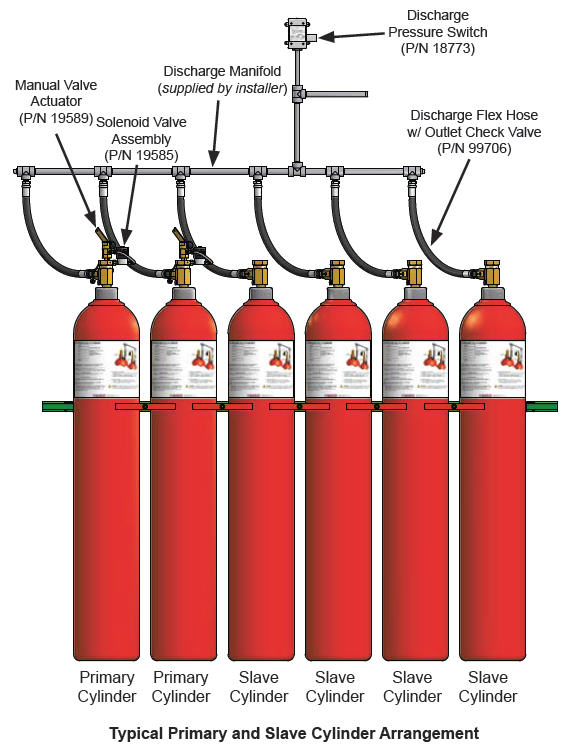สอบถามข้อมูลเพิ่มเติม
โทร 0 2026 0493
0 2026 0494
มือถือ 08 1170 0242
info.inspector@yahoo.com



Carbon Dioxide Suppression Systems
|
Description
Carbon dioxide (CO2) is a colorless, odorless, and chemically inert gas that is both readily available and electrically non-conductive. It extinguishes fire primarily by lowering the level of oxygen that supports combustion in a protected area. This mechanism of fire suppression makes CO2 suppression systems highly effective, requiring minimal clean-up, but should be used in normally unoccupied hazard locations or otherwise avoided by personnel when discharged. CO2 suppression systems may utilize the gas through a total flooding approach but carbon dioxide is also the only gaseous agent that may be utilized through local application. Carbon dioxide may be stored in either high pressure spun steel cylinders (HPCO2 suppression systems) or low pressure light wall refrigerated tanks (LPCO2 suppression systems). NOTE: Both HPCO2 and LPCO2 systems are equally effective at fighting fires. Neither one is better than the other in terms of extinguishment. |
Typical areas of fire protection
|
HPCO2 Advantages
HPCO2 system have several advantages over LPCO2 systems.
- Less expensive for smaller systems
- Stored in US-DOT compliant High spun cylinders.
- Cylinders come in 3 different sizes
- Easy to install
- Readily Available
- Fewer Components
 |
|
|||||||||||||||||||||||||||||||||||||||||||||||||||
LPCO2 Advantages
LPCO2 system have several advantages over HPCO2 systems.
- Do not require hydrostatic testing
- Continuous monitoring of the liquid level and tank pressure; the liquid level gauge provides standard alarm outputs or an optional 4-20mA output(HPCO2 cylinders must be removed from service semi-annually to be weighed)
- Require 40% less floor space and less floor loading than HPCO2 systems
- Multi-shot capabilities without any switch over to a reserve
- Hazards may be added to an existing LPCO2 system at anytime
- LPCO2 Storage Units can be refilled while remaining in service; HPCO2 cylinders must be uninstalled, sent out to a refill location, and replaced
- Lower material cost when systems require more than 4000 lbs (1814kg) of carbon dioxide (40 or more 100 lb (45 kg) HPCO2 cylinders)
- For critical installations, dual refrigeration options are available for LPCO2 Storage Units
- LPCO2 systems are 30% more efficient than HPCO2 systems at local application
- LPCO2 systems have lower overall maintenance costs than HPCO2 systems
 |
Tank Capacity |
Weight |
(Inches) |
Allignment |
Voltage1 |
|
1Other voltages available upon request
The following datasheets offer more information on the specific carbon dioxide fire suppression systems available from Janus Fire Systems.


